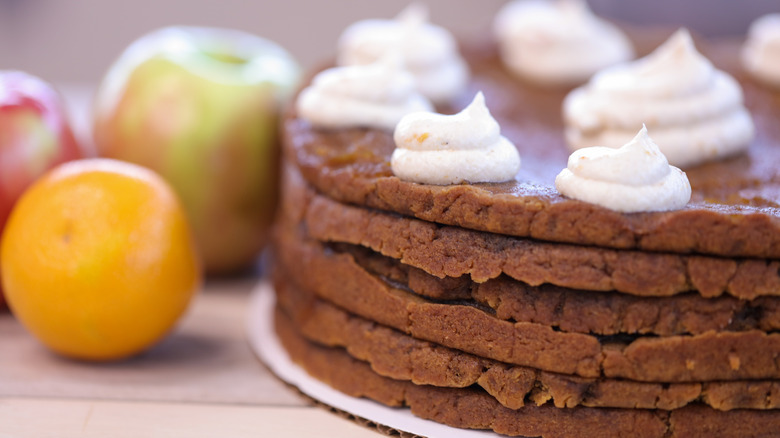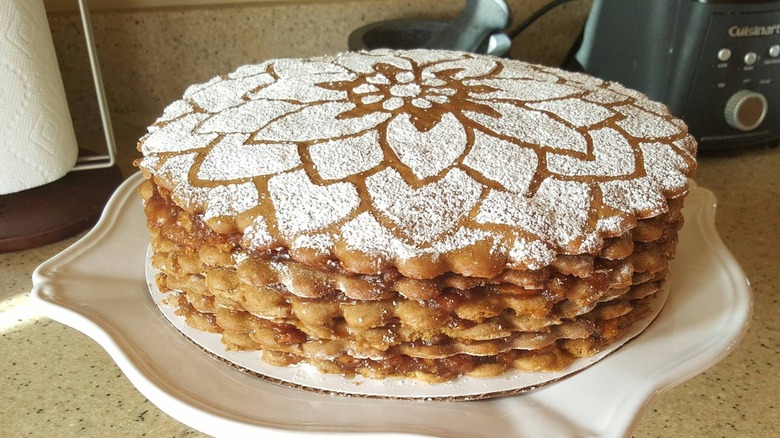Tennessee Apple Stack Cake Has A Sweetly Romantic Backstory
Tennessee apple stack cake is a dessert of many names, including (clutch your pearls, Tennesseans) Kentucky stack cake and Kentucky washday cake. A less state-specific appellation is Appalachian stack cake, while monikers that eschew regionality altogether include dried apple stack cake, pioneer stack cake, and poor man's fruitcake. As the name implies, the cake consists of multiple layers, but it differs from other layered cakes like New Orleans' doberge and Maryland's Smith Island in that it's sandwiched together with fruit instead of frosting.
No one can say where and when apple stack cake was created down to the precise date and GPS coordinates, although there does seem to be a consensus that it dates back to the 19th century and has its genesis in the Appalachian region. People often want more of a backstory, though — a recipe "meet cute," as it were — and this cake certainly has one. As some would have it, the dessert was popular at weddings back in the 1800s because the guests would each bring a cake layer, leaving the hosts to do little more than assemble it with either apple butter or re-hydrated dried apples. Very sweet, but very unlikely, since the recipe just doesn't work that way.
Its recipe gives the lie to the legend
There are many recipes for Tennessee (or Kentucky) stack cake, and some of them even involve fruits other than apples, although apples seem to have been the most popular filling, historically, quite possibly because they're both ubiquitous and easily preserved for the winter months. The cakes typically consist of about six layers, although they can have up to 16. Most are made with spices like ginger and cinnamon. However, exceptions exist. A Virginian woman named Nevada had a recipe published by the Tennessee State Museum (go figure!) that flavored the cake with nothing but apples.
The one thing most of these recipes seem to have in common is that the cakes need to sit for a while after being assembled. Anywhere from one to several days seems to be the norm, which means that the apocryphal bride and groom from the backstory would have had to wait a long, long while to cut their wedding cake. And what newlyweds want to wait forever to hold their piece, let alone taste it?
An alternative theory holds that stack cakes would have been more for washdays than weddings, since they could be made on a Monday and eaten on a Wednesday. These days, however, they seem to be more of a Christmastime tradition, which tracks with the fact that they're fairly labor-intensive even before you get to the letting-them-sit stage, so they're something you'd be likely to make only for special occasions.

